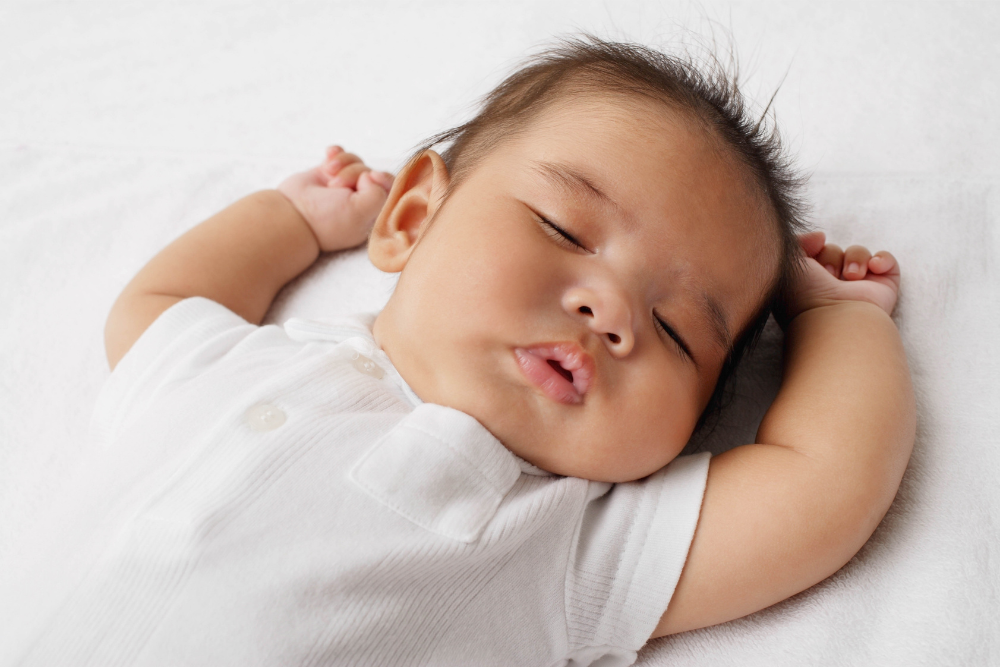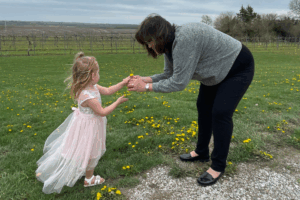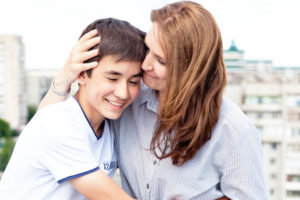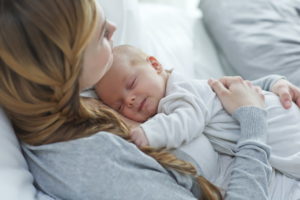Welcoming a baby into the world is a happy and exciting time! One of the most important aspects of caring for a baby is ensuring safe sleep. Infants typically sleep 16 to 18 hours a day, which is essential for their growth, development and overall health.
Safe sleep practices are important for the health and safety of babies, because they grow and change quickly in their first year. This also is when babies are most at risk for sleep-related accidents.
If your baby struggles to sleep or stay asleep, remember these tips below – this ensures that you are being safe with your baby as you try to get them to sleep.
Safe Sleep Guidelines for Newborns
1. Place Baby on Their Back to Sleep
Placing your baby on their back to sleep is one of the most important things you can do to reduce the risk of Sudden Unexplained Infant Death (SUID). SUID refers to the sudden, unexplained death of a seemingly healthy infant, usually during sleep. Babies who sleep on their stomachs or sides are at a higher risk of suffocation and sleep-related accidents.
2. Use a Firm Sleep Surface
Ensure your baby’s sleep surface is firm and flat. Soft mattresses, pillows, blankets and stuffed animals are a suffocation hazard. The safest sleeping environment is a crib or bassinet with a firm mattress and a fitted sheet. While car seats are essential for traveling with your newborn, they are not designed for extended sleep outside of the car. If your baby falls asleep in the car during a drive, it is best to carefully transfer them to a safe sleep environment such as a crib or bassinet, providing a firm, flat surface that promotes safe, healthy sleep.
3. Keep the Sleep Area Free of Soft Objects and Loose Bedding
To prevent suffocation, never place soft toys, pillows, blankets or bumper pads in the crib with your baby. Even items like quilts and comforters can be a suffocation risk if your baby’s face becomes buried in them. Until your baby’s first birthday, keep the crib clean and free from these items, and only use a fitted sheet.
4. Room-Sharing Without Bed-Sharing
It is recommended that infants sleep in the same room as their parents for the first six months, but they should have their own separate sleep space, such as a crib or bassinet. Room-sharing can help reduce the risk of SUID by making it easier to monitor your baby and respond quickly to any needs. However, sharing a bed with your baby is not recommended because of the risk of accidental suffocation, strangulation or falls.
5. Avoid Overheating
Overheating is another risk factor for SUID. Dress your baby in light layers and keep the room at a comfortable temperature (between 68°F and 72°F). Avoid using hats or additional blankets, and make sure your baby is not sweating or feels too warm to the touch.
6. Encourage Tummy Time When Awake
Tummy time is important for helping your baby develop strong muscles in their neck, shoulders and arms. While babies should always be placed on their back to sleep, tummy time is encouraged when your baby is awake and supervised. Once your baby can roll onto their tummy when they are in bed, you can leave them on their tummy, but start them off in the safest position by placing them on their back to sleep.
7. Breastfeeding and Pacifiers
Breastfeeding has been linked to a reduced risk of SUID; if possible, breastfeed your baby. Offering a pacifier during naps and bedtime also has been shown to reduce the risk of SUID. However, it is important to wait until breastfeeding is well established before introducing a pacifier, usually around three to four weeks of age.
The Role of Consistency
Safe sleep practices should be followed consistently, no matter who is caring for your baby. This includes relatives, caregivers or babysitters. It is important to communicate your practices to everyone involved in caring for your infant to ensure the baby’s sleep environment always remains safe.
Additionally, it is important to follow your baby’s sleep routine. Each baby is different, and while some may fall asleep quickly and easily in their crib, others may need more attention or help. Be mindful of any changes in your baby’s sleep behavior. If you have concerns, talk to your baby’s doctor.
Conclusion
Your newborn’s sleep safety is important. Following these safe sleep practices can reduce the risks of sleep-related accidents. Safe sleep practices provide peace of mind while allowing your baby to grow and develop in a safe, nurturing environment.
Learn more about infant safe sleep.

Alycia Davis
Nebraska Department of Health and Human Services









